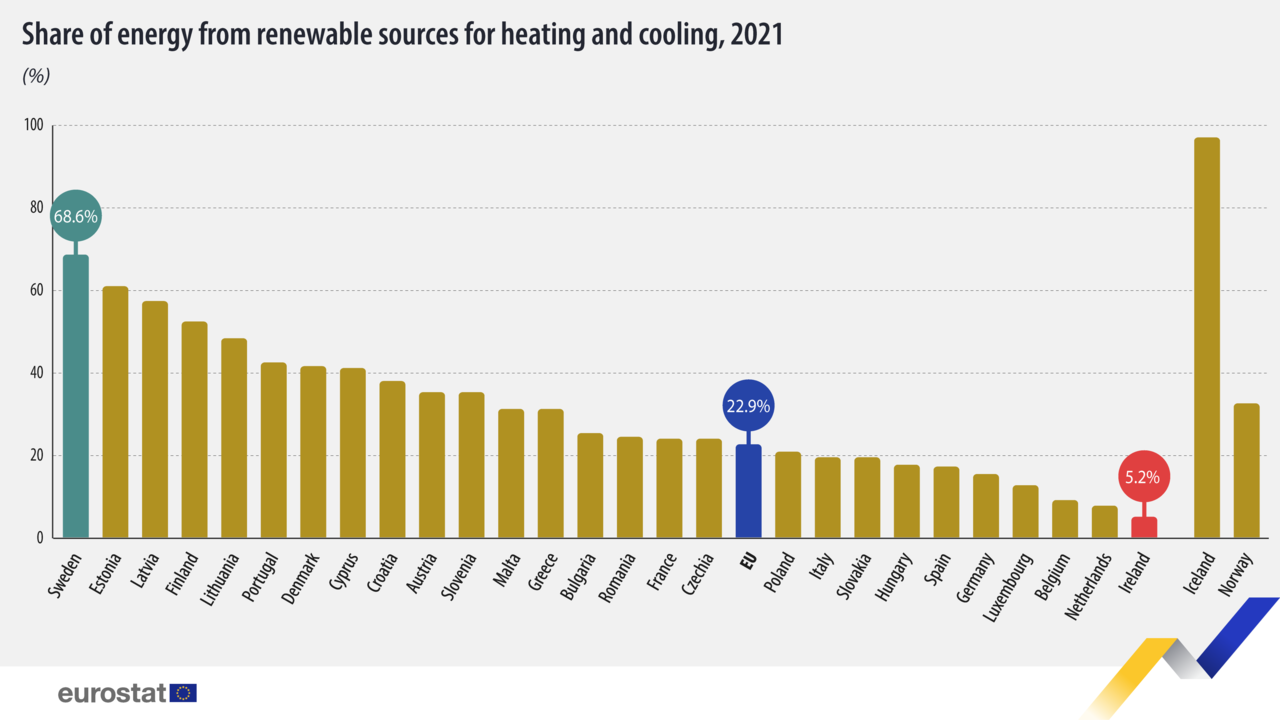Renewable energy for heating and cooling in the EU in 2021
The share of renewable energy sources for heating and cooling in the EU stagnated in 2021, due to the overall increase in gross consumption of all fuels as a result of the post COVID-19 economic recovery.
Recent figures published by Eurostat for the European Commission show that 22.9% of total energy use for heating and cooling in the EU came from renewable sources in 2021, a 0.1 percentage points decrease from 23.0% in 2020.
Energy for heating and cooling represents almost 50% of the EU’s total gross final energy consumption. In absolute terms, the gross final consumption of renewable energy for heating and cooling in the EU has gradually increased between 2004 and 2021 (mostly due to the contribution of biomass and heat pumps). However, in 2021, gross consumption of all fuels also increased mainly due to economic recovery after lifting COVID-19 restrictions. As a result, the share of renewable energy in gross final consumption for heating and cooling purposes slightly decreased.
Among the EU Member States, Sweden stood out with more than two thirds (68.6%) of the energy used for heating and cooling in 2021 stemming from renewable sources (mostly biomass and heat pumps), followed by Estonia (61.3%), Latvia (57.4%) and Finland (52.6%), all of which use a large share of biomass. In contrast, in Ireland (5.2%), the Netherlands (7.7%) and Belgium (9.2%), renewable sources contributed the least to heating and cooling.

Source
Eurostat. 3 February 2023. https://ec.europa.eu/eurostat/en/web/products-eurostat-news/w/ddn-20230203-1
